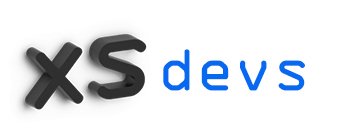In today’s digital age, the internet plays a vital role in connecting people, providing information, and offering various services. However, not all users have the same abilities or access to technology. Web accessibility aims to ensure that websites and web applications are inclusive and usable for all individuals, regardless of their disabilities or limitations. In this article, we will explore the importance of web accessibility and discuss key considerations for designing accessible websites.
Table of Contents
- Introduction to Web Accessibility
- Understanding Disabilities and Challenges
- The Benefits of Web Accessibility
- Web Content Accessibility Guidelines (WCAG)
- Key Principles of Web Accessibility
- Designing Accessible Websites
- Assistive Technologies and Compatibility
- Testing and Evaluating Accessibility
- Common Accessibility Mistakes to Avoid
- The Future of Web Accessibility
- Conclusion
- FAQs
1. Introduction to Web Accessibility
Web accessibility refers to the practice of designing and developing websites and web applications that can be used and accessed by all individuals, including those with disabilities. It ensures that people with visual, auditory, physical, cognitive, or neurological impairments can perceive, navigate, and interact with web content effectively.
2. Understanding Disabilities and Challenges
To design for accessibility, it is essential to understand the different disabilities and challenges that users may face. Some common disabilities include visual impairments, hearing impairments, motor impairments, cognitive impairments, and age-related limitations. Each disability presents unique challenges that need to be addressed to provide an inclusive web experience.
3. The Benefits of Web Accessibility
Web accessibility offers numerous benefits, including:
- Inclusivity: Accessible websites ensure that all users, regardless of their abilities, can access and use web content, promoting inclusivity and equal opportunities.
- Expanded Audience: By designing for accessibility, websites can reach a broader audience, including individuals with disabilities who might otherwise be excluded.
- Improved User Experience: Web accessibility often leads to improved usability for all users, as it encourages clear navigation, well-structured content, and optimized interaction patterns.
- Legal and Ethical Compliance: Many countries have legislation or regulations in place that require websites to be accessible, ensuring compliance with legal and ethical obligations.
4. Web Content Accessibility Guidelines (WCAG)
The Web Content Accessibility Guidelines (WCAG) provide a set of internationally recognized standards for web accessibility. WCAG outlines principles, guidelines, and success criteria to make web content perceivable, operable, understandable, and robust. It is crucial for designers and developers to adhere to these guidelines to ensure the accessibility of their websites.
5. Key Principles of Web Accessibility
Web accessibility is guided by several key principles:
- Perceivable: Ensure that users can perceive and perceive the information presented on the website through alternative text, captions, and proper color contrast.
- Operable: Design websites that are easy to operate and navigate, allowing users to interact with content using various input methods.
- Understandable: Make web content and functionality clear and understandable, using plain language, consistent navigation, and logical organization.
- Robust: Ensure that websites are compatible with different browsers, assistive technologies, and future technologies, allowing for a sustainable and adaptable web experience.
6. Designing Accessible Websites
Designing accessible websites involves implementing specific strategies and techniques, including:
- Semantic HTML: Use proper HTML markup to structure content, provide meaningful headings, and use appropriate elements for interactive components.
- Keyboard Accessibility: Ensure that all functionality can be accessed and operated using a keyboard, allowing users who rely on keyboard navigation to interact with the website effectively.
- Color Contrast: Use sufficient color contrast between text and background to ensure readability for users with visual impairments.
- Alternative Text: Provide descriptive alternative text for images, allowing users with visual impairments to understand the context and meaning conveyed by the visuals.
- Captioning and Transcripts: Include captions or transcripts for multimedia content to make it accessible to users with hearing impairments.
- Focus Indication: Ensure that interactive elements receive clear focus indication, making it easier for users to understand their current position and navigate the website.
- Clear Navigation: Design intuitive and consistent navigation menus, headings, and landmarks to facilitate easy browsing and orientation.
- Form Accessibility: Implement accessible form controls, provide clear instructions, and use error validation techniques to assist users in completing forms successfully.
7. Assistive Technologies and Compatibility
Assistive technologies play a crucial role in enabling individuals with disabilities to access and interact with web content. These technologies include screen readers, braille displays, screen magnifiers, voice recognition software, and alternative input devices. Designers and developers should ensure compatibility with these assistive technologies to provide a seamless user experience.
8. Testing and Evaluating Accessibility
Regular testing and evaluation are essential to ensure the accessibility of websites. Various tools and techniques are available to assess web accessibility compliance, including automated testing tools, manual testing with assistive technologies, and user testing with individuals with disabilities. These evaluations help identify and address accessibility issues effectively.
9. Common Accessibility Mistakes to Avoid
When designing for web accessibility, it’s important to be aware of common mistakes that can hinder accessibility, such as:
- Overreliance on Color: Avoid conveying important information solely through color, as users with visual impairments may not perceive it.
- Lack of Alternative Text: Failing to provide alternative text for images and multimedia content excludes users who rely on assistive technologies.
- Inaccessible Forms: Poorly designed forms without proper labels, instructions, or error validation can create barriers for users with disabilities.
- Unresponsive Design: Websites that are not responsive or adaptable to different screen sizes and devices can pose challenges for users with disabilities.
10. The Future of Web Accessibility
As technology continues to advance, the future of web accessibility holds promising possibilities. Innovations such as artificial intelligence, natural language processing, and machine learning have the potential to further enhance web accessibility and provide more personalized experiences for users with disabilities.
Conclusion
Web accessibility is not just a legal requirement; it is a moral obligation to ensure that the web is accessible to all individuals, regardless of their abilities. By designing and developing websites with accessibility in mind, we can create a more inclusive digital environment that empowers and embraces all users.
FAQs
- Q: Why is web accessibility important? A: Web accessibility ensures that websites and web applications can be accessed and used by individuals with disabilities, promoting inclusivity and equal opportunities.
- Q: Who benefits from web accessibility? A: Web accessibility benefits individuals with disabilities, including those with visual impairments, hearing impairments, motor impairments, cognitive impairments, and age-related limitations. It also benefits all users by improving usability and user experience.
- Q: What are some common web accessibility guidelines to follow? A: Some common web accessibility guidelines include providing alternative text for images, ensuring proper color contrast, designing keyboard-accessible interfaces, and implementing clear and logical navigation.
- Q: How can I test the accessibility of my website? A: There are various tools and techniques available to test web accessibility, including automated testing tools, manual testing with assistive technologies, and user testing with individuals with disabilities.
- Q: What is the role of assistive technologies in web accessibility? A: Assistive technologies, such as screen readers and alternative input devices, help individuals with disabilities perceive, navigate, and interact with web content. Designing websites compatible with these technologies is essential for web accessibility.

